An inspection of Manor Lodge Approved Premises
Foreword (Back to top)
This is the second inspection in our new programme of Approved Premises (APs) inspections.
Encouragingly, we have rated Manor Lodge as ‘Good’, which reflects its strong leadership, focus on quality assurance, and committed workforce, which is working hard within the community to protect the public and deliver a high standard of supervision and care, often in challenging circumstances.
Our recommendations for Manor Lodge include the need to provide a programme of rehabilitative activities to help residents settle successfully back into the community. We also call on HM Prison and Probation Service (HMPPS) to urgently improve staffing and resourcing arrangements.
I have made it clear before that adequate staffing is needed across all probation services. This is especially true in APs, where staff work with some of the most difficult and complex individuals in society. Fair pay and manageable workloads are essential to attract and keep skilled professionals.
I’m encouraged that HMPPS is now reviewing staffing and pay in APs, and I look forward to hearing the results of this important work.
With further investment and support, Manor Lodge could be a model of best practice, and I wish them all the best for the future.
Martin Jones CBE
HM Chief Inspector of Probation
Background information (Back to top)
| Total number of approved premises nationally | 104 |
| Length of time on site by inspectors, including out-of-hours activity | 2 days |
| Total number of bedrooms in Manor Lodge | 25 |
| Average length of residents’ stay at Manor Lodge | 66 days |
Nationally
APs provide 24-hour monitoring and supervision to their residents and are expected to engage them in interventions to reduce the likelihood of further offending. There are 104 APs in England and Wales. Most are male only, with eight being female only. Twelve are psychologically informed planned environments (PIPEs),
co-commissioned with NHS England. Fourteen APs are independent, including five of the eight APs for women. These are led mostly by third-sector providers. Independent APs (IAPs) are delivered under contract and in partnership with HMPPS.
Locally
Manor Lodge is one of the public sector APs and has a maximum occupancy of 25 males, who are 18 years of age or over. This AP offers self-catered, single occupancy rooms. At the time of our inspection, 24 beds were occupied. The AP had recently been extended and was soon to increase its occupancy to 28.
Our inspection methodology
We inspected Manor Lodge AP during the week beginning 18 August 2025. This included the off-site inspection of eight cases relating to individuals who were either still resident at the AP or who had recently departed. While carrying out on-site fieldwork, we observed practice and interviewed managers and staff, individually and in groups. We also received feedback from 10 current residents about their experiences at Manor Lodge. Our fieldwork also included the AP’s ‘out of hours’ activities – specifically, the early morning and evening shift handover processes and a detailed analysis of recent enforcement and recall decisions.
Ratings (Back to top)
| Fieldwork started August 2025 | Score 8/15 |
| Overall rating | Good |
| Standard | Score | Rating |
| Leadership and governance | 2 | Good |
| Staffing | 1 | Requires improvement |
| Safety | 2 | Good |
| Public protection | 2 | Good |
| Rehabilitation | 1 | Requires improvement |
Recommendations (Back to top)
As a result of our inspection findings, we have made the following recommendations that we believe, if implemented, will have a positive impact on the quality of services delivered at Manor Lodge AP.
The Manor Lodge leadership team should:
- develop and publish a documented vision for the AP that clearly sets out its delivery model, aims and objectives, and include this in the welcome pack for residents
- identify a process for routinely gathering and analysing equity, diversity, and inclusion (EDI) information, so that the services delivered are fully responsive to the needs of residents
- implement and deliver a regular, planned, and structured schedule of rehabilitative activities to better promote residents’ resettlement and rehabilitation
- work with staff to improve their confidence and skills in delivering groupwork interventions.
HM Prison and Probation Service should:
- urgently complete the review of staffing, resourcing, and recruitment procedures for APs to promote safe and rehabilitative practice – this should include addressing staff pay, which is negatively affecting recruitment and retention
- action the manager’s requests for new windows and the move to a catered facility, to improve the AP’s environment and support for residents
- assure itself that the AP Central Referral Unit’s (CRU) allocation procedures are safe and fair. This includes reviewing whether any adjustments can be made to reduce the frequency of short-notice placements at individual APs, to support pre-arrival preparation.
Leadership and governance (Back to top)
| Leadership and governance drive the delivery of a high-quality service. | Rating |
| Good |
Strengths:
- The AP manager strongly emphasised treating residents as individuals, with a focus on embedding the values of decency and respect into practice. Residents generally viewed the AP as a supportive environment; there was a commitment to continuity of care, with offers of phone contact after they had moved on.
- The manager was proactive in forming positive relationships with neighbours in the immediate vicinity, as well as with local businesses (such as the local supermarket, frequented by residents). This helped with information-sharing and intelligence-gathering. It also enabled the AP to monitor the behaviours of residents in the local community, keep people safe, and assess residents’ risks and likelihood of reoffending.
- Manor Lodge had a good relationship with the police, particularly the neighbourhood team, who regularly visited the AP. It also had a strong relationship with the local MOSOVO (Management of Sexual Offenders and Violent Offenders) team.
- The area manager and AP manager established the Manor Lodge neighbourhood interface meeting. This was chaired by the AP and attended by prominent partners, including the Parish Council and police. It aimed to foster positive and respectful relationships to support residents’ rehabilitation and ensure communities were properly safeguarded.
- Manor Lodge had achieved its ‘Enabling Environment’ (EE) award, an expectation for all APs in England and Wales. The EE award is designed as a quality improvement mechanism to help services achieve a level of excellence in the way relationships function within their environment.
- The Manor Lodge community group met every Friday and was attended by all residents and staff. The focus of the group was to take feedback from residents about the service provided and agree actions for improvement. The psychologist from the Offender Personality Disorder pathway attended the meeting to support and enhance the feedback process. We were provided with examples of how the AP had made appropriate changes in response to feedback.
- There was a strong partnership with Cranstoun, the local provider delivering substance misuse interventions across Windsor and Maidenhead. Cranstoun attended the AP every week to support residents who were experiencing substance misuse difficulties or needing help with relapse prevention. To promote compliance, the AP also covered travel expenses for residents attending their first assessment appointment at Cranstoun’s base.
- A formal information-sharing agreement was in place with a general practitioner (GP) surgery located close to the AP, which all residents were registered with. An arrangement was also maintained with a local pharmacy, which responded to prescription requests and delivered medication to the AP as required. There was an appropriately flexible arrangement in place with the pharmacy to ensure that residents had the medication they needed at all times.
- At the time of our inspection, Manor Lodge had been performing well against the national service level measures for APs. The manager actively monitored the AP’s performance against these expectations and understood the AP’s strengths and areas for improvement. The manager used regular individual staff supervision and team meetings to drive improvements in performance, and this had had the desired positive impact in the months leading up to our inspection, when performance had improved.
- The manager was instrumental in working with the area manager to design and implement a localised quality assurance (QA) process for their group of APs in the South Central division. While the process was tailored to local needs, it complemented the principles set out in the national AP guidance. The QA form covered all aspects of AP practice and aimed to identify strengths and areas for improvement for individual staff members and the wider teams. Learning was disseminated during supervision, team meetings and area staff development days. The QA framework also identified learning for probation practitioners, who received feedback as part of the process.
- In addition to the QA process, a staff competency assessment was created to audit staff’s knowledge and capability across all AP practices and processes. We were provided with three examples where the assessment had been used with staff members and actions for improvement had been identified.
- Overall, a culture of learning and continuous improvement was actively promoted by management. A schedule of staff development days was fully embedded, the content of which was driven by findings from the area quality assurance process, staff competency assessments and national performance reporting.
- Management promoted a personalised approach to residents. In most of the eight cases we reviewed, diverse needs had been considered, and the manager shared examples of adaptations made to respect religious beliefs, including food storage and preparation.
Areas for improvement:
- Manor Lodge did not have a documented vision setting out how it would deliver high-quality provision to residents.
- There was no formal or regular analysis of EDI data to enhance understanding about the profile of residents in the AP.
Staffing (Back to top)
| Staff are enabled to deliver a high-quality service for residents. | Rating |
| Requires improvement |
Strengths:
- Most staff were proud to work at Manor Lodge and were clearly engaged and motivated. Eight of the 10 residents surveyed during the inspection said that staff treated them with dignity and respect either ‘always’ or ‘most of the time’. Some residents highlighted their relationships with staff and the warm welcome they received when released from prison as the most positive aspects of their experiences at the AP.
- There were national mandatory training expectations for new AP staff. The manager actively promoted this training and tracked staff’s attendance and whether they had completed it. To enhance the localised induction programme, the manager provided additional supervision to new members of staff and allocated them to more experienced staff members so that they could observe and shadow them in the early part of their careers.
- Staff induction was supported by a schedule of development days across the South Central division. These were established to supplement the national training programme, and to provide a continuous offer of learning and development locally tailored for all staff.
- Regular one-to-one supervision was provided to every staff member, and staff were generally positive about the supervision process and support provided by the manager. The manager used a supervision template, adapted in accordance with the role. We reviewed the templates for the administrator, probation services officers (PSOs) and residential workers (RWs), and all were appropriate and assisted in the delivery of effective oversight and supervision to staff. Leaders operated an ‘open door’ policy and were approachable, which staff welcomed.
- A positive team culture had been created and there was a willingness from staff to support one another and provide cover. Cover was coordinated appropriately by the manager, although this was extremely challenging, with unfilled vacancies and staff sickness.
- We were made aware of health-related adjustments that the manager was making for staff to keep them in work. Strategies were also being devised for those currently absent, to support them back to work as soon as was feasible.
- The area manager was fully aware of the staffing situation at Manor Lodge and was a strong source of support for the AP manager.
Areas for improvement:
- Some staff were critical of the national training offer. They felt it relied too much on e-learning and was heavily orientated towards theory, rather than supporting them to apply practical knowledge within the AP setting. Staff would also welcome an additional focus on delivering rehabilitative activities and more support in doing this.
- Manor Lodge worked with the standard staffing resource for APs. This was two RWs on site at any one time, and two PSOs/keyworkers, who generally worked between the hours of 9am and 5pm. Staffing was not always conducive to providing the best possible service to 25 residents. It was compromised further by some long-term sickness and vacancies at both RW and PSO grades.
- The recruitment and retention of staff in this area of the country is known to be very difficult. High living costs and proximity to London (without the additional pay), often means that staff would rather work in locations that receive the ‘London weighting’, and Manor Lodge was experiencing these difficulties. Moreover, national recruitment is slow and not conducive to achieving safe staffing levels.
- With a current maximum occupancy of 25, rising to 28 soon, there was only one AP manager. The manager’s role was extensive and included behavioural issues, community relations, enforcement decisions, rota oversight, staffing, quality assurance, and line management. Although the AP manager was doing a good job, more management resource was needed.
Safety (Back to top)
| The approved premises provides a safe, healthy and dignified environment for staff and residents. | Rating |
| Good |
Strengths:
- Risks of self-harm and suicide were managed well. We observed professionally curious handover discussions between staff, where the behaviours and well-being of individual residents were being actively monitored and discussed. We were also provided with examples where staff had responded appropriately when residents had experienced a deterioration in their mental health. The AP consistently met national expectations regarding the timely completion and review of support and safety plans. There were adapted rooms to enable risks of self-harm and suicide to be managed safely, including rooms with anti-ligature fixtures.
- The storage and administration of medication were generally consistent with policy and aligned with best practice, as follows:
- medication was stored in individual lockable boxes that were numbered to correspond with residents’ room numbers
- these boxes were stored in a locked cupboard, in a locked room situated in the secure main office
- medication in possession assessments were completed, countersigned by the manager, and recorded on nDelius
- staff confirmed that they had completed medication training and felt confident with the processes
- medication administration records (MAR) were completed correctly and evidenced by two staff members signing when residents had taken medication
- staff followed the supervised self-administration approach by cutting out the correct number of tablets and passing them to the resident to take from the blister pack
- residents were asked to sign for their medication
- staff observed residents swallowing their medication
- the MAR sheets reflected that an audit of medication takes place each night
- residents with medication in possession were asked to bring their medication to the office weekly for auditing
- medication was provided to residents via a hatch in the main office which is in clear sight of CCTV.
- In most inspected cases, staff had taken proactive steps to ensure that residents were receiving the necessary support. Examples included:
- referring individuals to mental health services at times of crisis
- ensuring that residents received medical treatment when they were ill or had injured themselves
- making referrals to substance misuse services when drug use had escalated.
- Our review of recent enforcement and recall decisions and the staff’s response to positive drug and alcohol testing showed the team’s ability to assess and manage poor behaviour and escalate emerging risks within the AP. We observed thorough searches of prospective residents’ property before their induction, to maintain safety standards in the AP.
- Manor Lodge had been refurbished relatively recently, and received a good response from facilities management in relation to work orders. The manager had regular meetings with the facilities management lead to ensure that maintenance issues relating to either individual bedrooms or communal areas were responded to and escalated when needed.
- There was extensive CCTV coverage throughout the AP and the quality was good. Panic alarms were in place and were tested frequently, as were fire alarms. Staff and visitors were provided with personal attack alarms.
Areas for improvement:
- In one inspected case, safeguarding practice should have been better. Although the resident’s mental health and substance misuse were regularly discussed, the onus was placed on them to seek relevant support. Despite providing positive drug test results, no referral had been made to drug services.
- Some residents appreciated having a sink and fridge in their own bedrooms. However, others raised concerns that their rooms were too small, too hot or had too many insects. The windows in many of the bedrooms also appeared dirty and discoloured. It was positive that a business case had already been submitted for all windows in the AP to be replaced.
- Manor Lodge is one of the few self-catered APs in the country, and while some residents appreciated the flexibility and independence that this provided, others struggled with it. The self-catered kitchens were not always kept clean and this caused significant discomfort for some. Moreover, the location of the AP, delays in benefits payments for people released from custody and rising food prices made it difficult for residents to buy their own food. The manager had already escalated the need to switch from a self-catered AP to catered.
Public protection (Back to top)
| The approved premises effectively protects the public | Rating |
| Good |
Strengths:
- Manor Lodge was represented at Multi-Agency Public Protection Meetings (MAPPA) meetings with the area manager and manager sharing attendance responsibilities in line with their grade and level of responsibility. Keyworkers were also encouraged to attend MAPPA meetings for their own cases. The neighbourhood interface meeting, designed by Manor Lodge, was a good example of the AP working proactively with other agencies to share information, manage relationships with partners and collaborate with others to manage risk.
- The manager provided examples of when they had attempted to appeal allocation decisions by the CRU if it was felt that certain prospective residents could have a negative impact on risk or the dynamics within the AP.
- Relevant information for probation practitioners relating to enforcement or compliance with licence conditions and sign-in times was recorded effectively in the cases inspected. In some cases, we saw the use of three-way meetings and staff being proactive in trying to make contact with practitioners, although this was not always reciprocated. To improve collaboration with probation delivery units (PDUs) and probation practitioners, the AP held weekly PDU surgeries, to discuss referrals and explain more about the AP regime and the importance of working together. Involving the probation practitioner in the AP QA process was also a welcome example of Manor Lodge trying to improve their relationship and joint working with PDUs.
- We observed the team taking care to ensure that children and victims of domestic abuse were safeguarded. In one case inspected, the AP was active in working with a perpetrator of domestic abuse to ensure he avoided contact with his ex-partner. Poor compliance or potential behaviours of concern were discussed in handover meetings, which were all accurately recorded. The process for recording and monitoring compliance with licence conditions, including sign-ins and curfews, was accessible and robust.
- The relationship developed with the local supermarket ensured that any concerns they had about residents could be dealt with appropriately.
- We observed both morning and evening handovers, and these were comprehensive and appropriately recorded. The manager attended the morning handover, which enabled quick decision-making. Staff displayed professional curiosity in these meetings.
- Regular drug testing was evident in the cases reviewed. We were also provided with a range of case examples from the three months leading up to our inspection where drug and alcohol testing had been carried out and appropriate decisions made in instances of positive tests and escalating risk.
Areas for improvement:
Allocation decisions made by the CRU were generally robust and followed national guidance. However, avulnerability in the CRU process was brought to our attention with the unit not currently maintaining lists of past residents that may have assaulted staff or be banned from a specific AP. This required attention.
- Our case inspections identified inconsistent recording of management oversight, which would be improved through additional management capacity.
Rehabilitation (Back to top)
| The approved premises delivers activity to reduce reoffending | Rating |
| Requires improvement |
Strengths:
- A weekly groupwork intervention on offending behaviour, based on the Good Lives model, was in place at Manor Lodge. It included sessions relating to ‘beliefs’ and ‘decision-making’, and one relating to ‘gratitude’, which we were told was well received by residents. Seven of the eight inspected cases also showed that residents had been engaged in some kind of rehabilitative work.
- Relationships between staff and residents were generally positive and we were made aware of examples where previous residents had contacted the manager after their departure to keep in touch and inform them of their progress.
- Records showed that frequent, good-quality keywork was being delivered. Support with benefits claims and Personal Independence Payments was provided, where relevant. It was positive that three residents were in employment at the time of our inspection and keyworkers were making relevant adjustments to ensure that these positions could be maintained alongside these residents meeting the terms of their release licence.
- We saw examples of staff preparing residents to move on from the AP. They supported residents with applications to other supported housing options, including to the Tier 3 Community Accommodation Service. The manager regularly extended the length of placements to avoid residents becoming homeless.
Areas for improvement:
- Some staff required support to develop their confidence and skills in delivering groupwork, and this was recognised by management as an area for improvement across the South Central division.
- We were made aware of other activities that had been delivered in the past, such as cooking classes and budgeting, which were particularly relevant for residents at Manor Lodge, given its self-catered environment. However, it was disappointing that such activities were not in operation at the time of our fieldwork.
- A small number of residents were challenging, and it was evident that some staff were at times frustrated and less tolerant of these individuals.
- Although our inspection case sample showed that residence plans were largely being developed in advance of residents’ arrival, there was limited contact from AP staff before the person’s arrival – practice that is essential to promote engagement. Lack of staff had clearly impacted on this. However, from an analysis undertaken by the AP of referrals made between March and August 2025, 125 placements had started, 45 per cent of which were allocated with less than seven days’ notice. This high rate of short notice placements was clearly impacting on the quality of pre-arrival and engagement work with prospective residents.
- A welcome pack was issued to prospective residents before they arrived or during induction, but this did not include an explanation of the AP regime or its aims and objectives.
- Although staff were doing what they could to help residents move on positively from the AP at the end of their placements, obtaining accommodation in the local area was difficult, very expensive and often out of reach for many of them.
Press release (Back to top)
“Committed workforce” at Manor Lodge Approved Premises, Windsor – rated ‘Good’
Response letter (Back to top)
Approved premises inspection response letters and action plans
Images (Back to top)
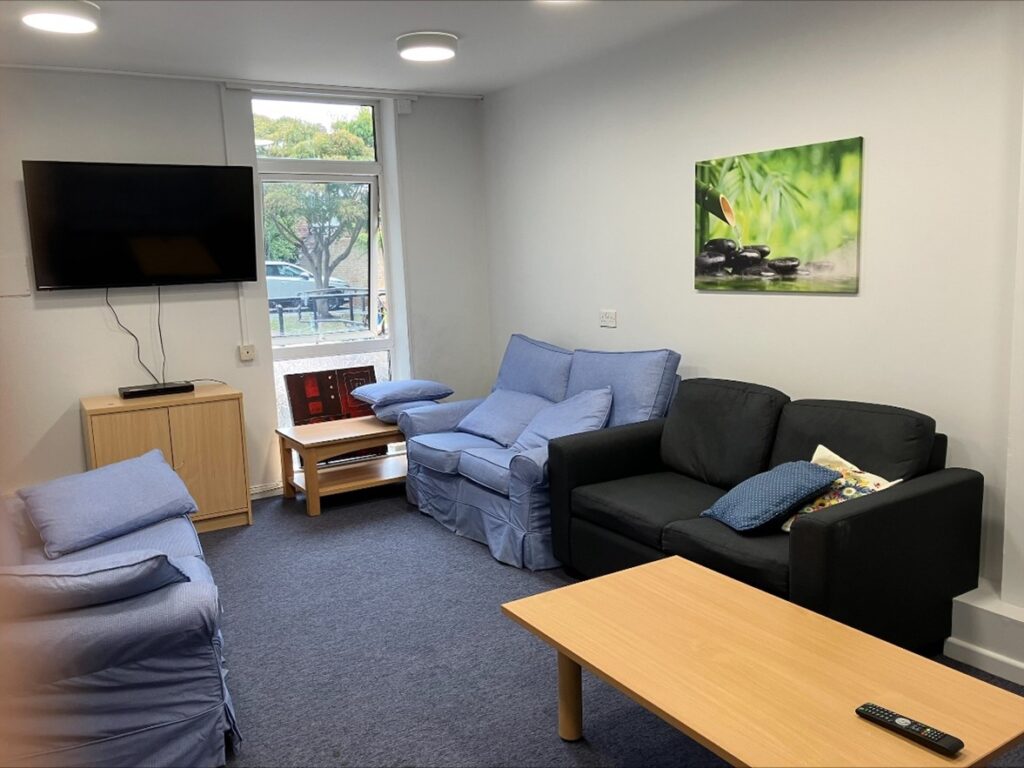
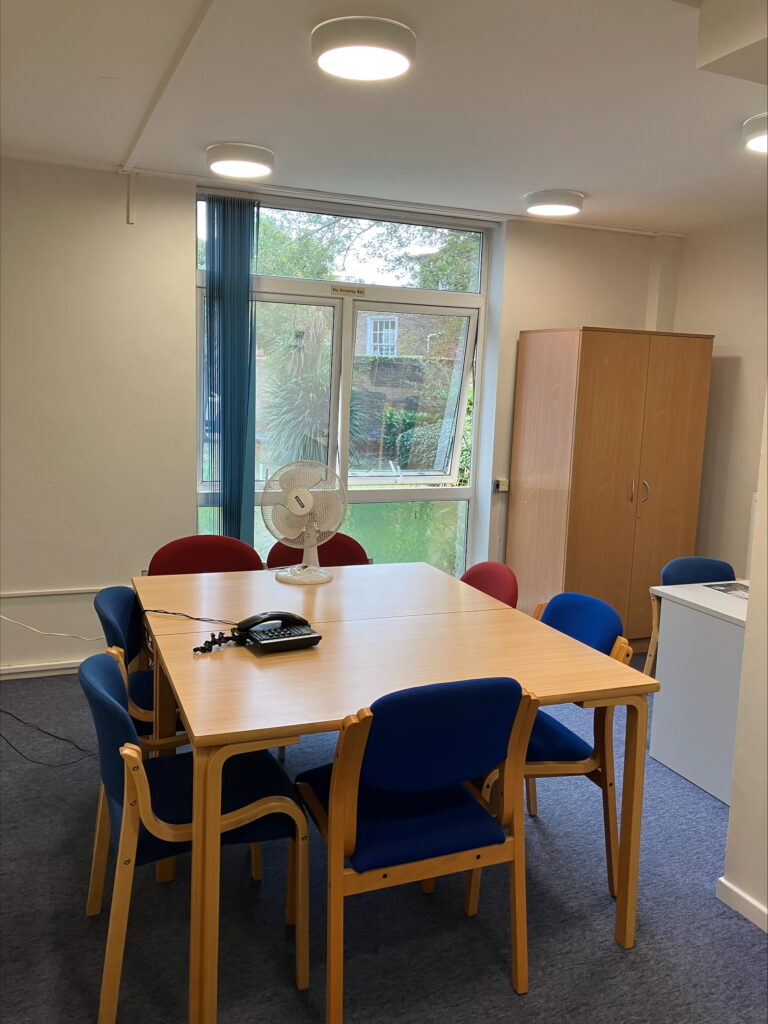
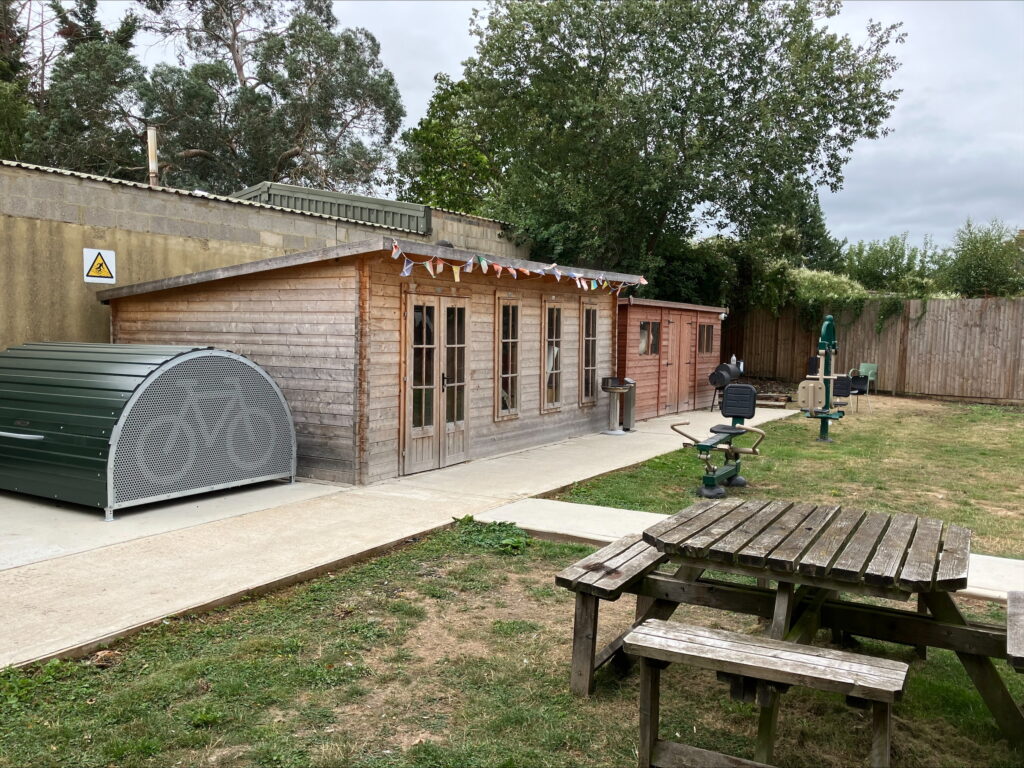
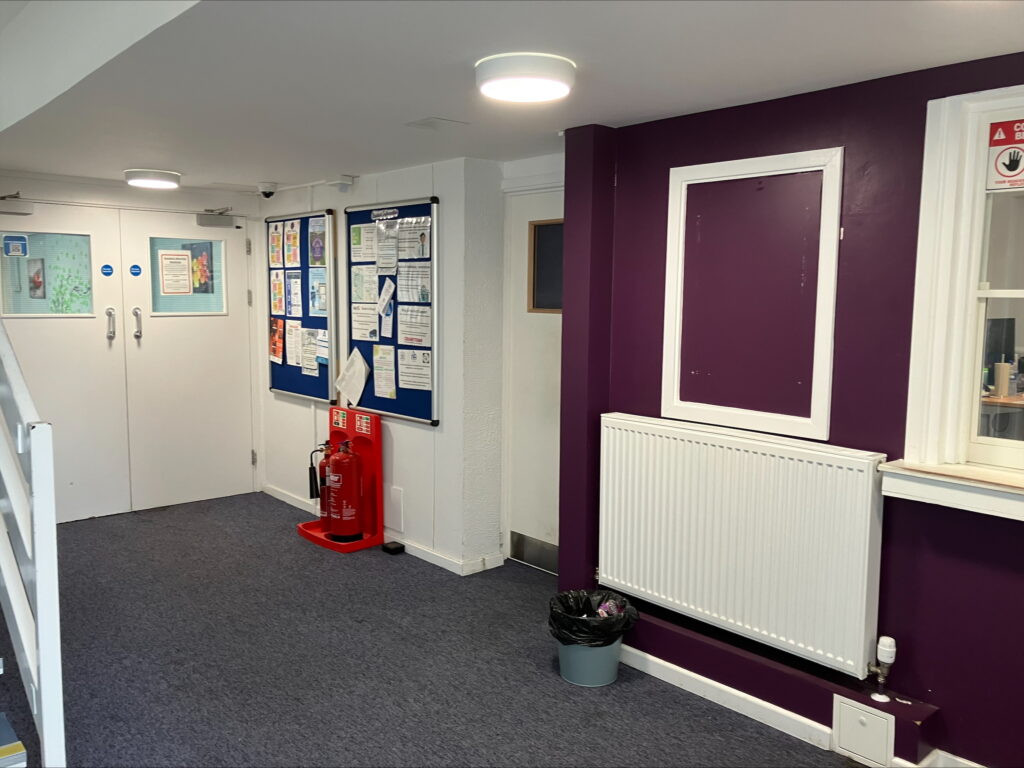
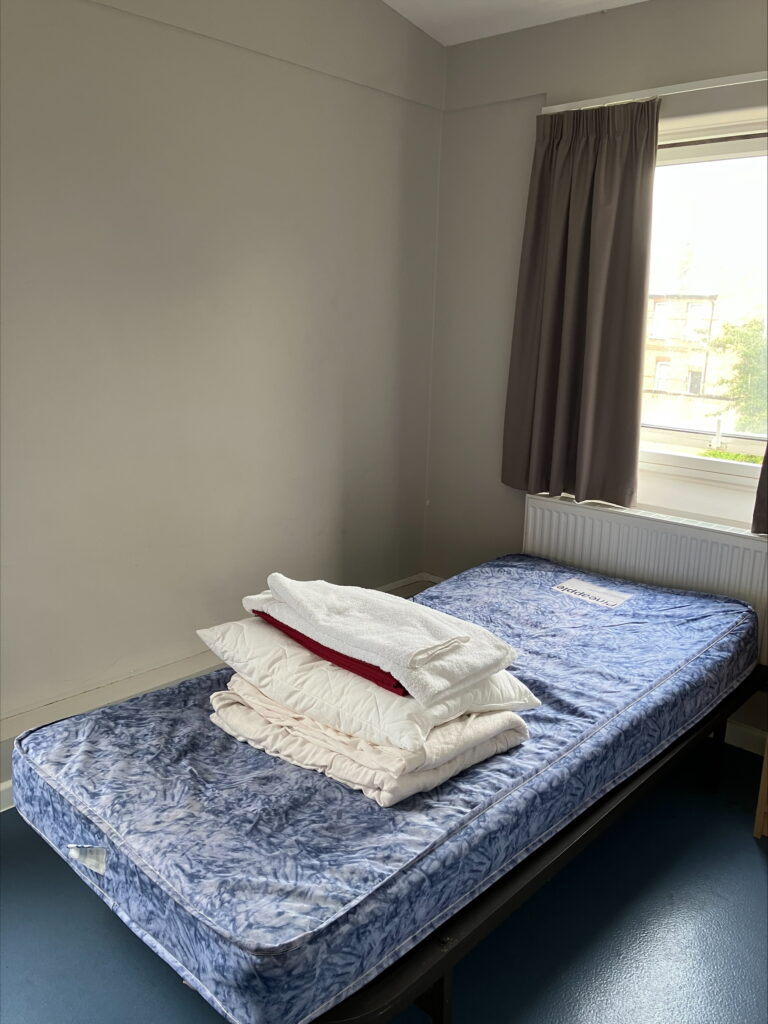

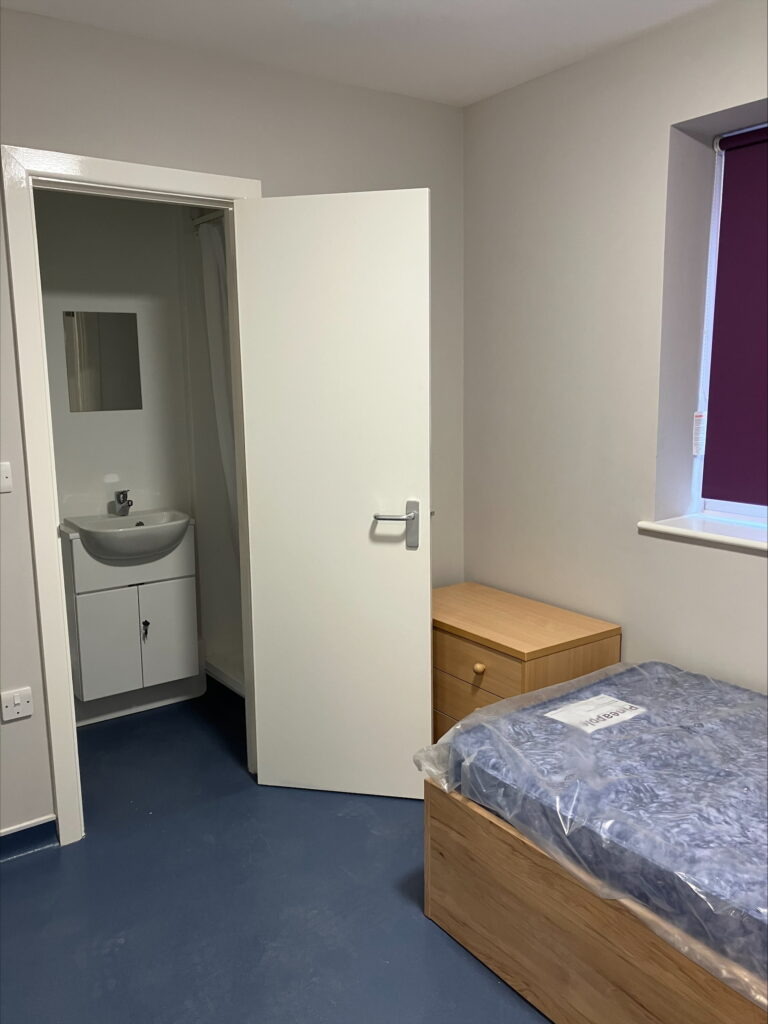
Further information (Back to top)
This inspection was led by HM Inspector Stuart Tasker, supported by a team of inspectors and colleagues from across the Inspectorate. We would like to thank all those who helped plan and took part in the inspection; without their help and cooperation, the inspection would not have been possible.
